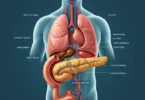Chemotherapy For Pancreatic Cancer
The aims of Chemotherapy is to stop the growth of cancer cells throughout the body by cell growth-inhibiting drugs (cytostatics). Cytostatics work very well against rapidly growing cells, a property which are particularly true for cancer cells.
Chemotherapy is necessary when perhaps all cancer cells present in the body could not be removed through surgery or if already formed metastases in other organs ( adjuvant therapy ). So a relapse (recurrence of tumor) can be prevented. The drugs are taken over periods (cycles) of time, between which there are breaks. The intake must be continuously monitored by a doctor who monitors the effects and side effects of drugs.
A cure of pancreatic cancer alone by the administration of cytostatics is not possible. Chemotherapy following surgery shows favorable effect on disease progression in many patients. Thus, the tumor growth for a certain time can be brought to a standstill and the survival time to be extended. Moreover, tumor related aches and pains can be relieved and weight loss is also stop. Even a significant reduction in tumor size can be achieved with the help of chemotherapy.
To achieve maximum impact against the tumor cells and to lower the risk of side effects , a combination of variously acting cytostatics can be attempted. The treatment is carried out in a plurality of treatment cycles that extend for several weeks.There are longer rest periods between each cycle. The treatment cycles are usually repeated three to six times. How many cycles are requireddepend on the particular case or be carried out, depending primarily on how the patient tolerates the treatment and how the therapy affects the cancer.
According to the recommendations of the “Guideline pancreatic” Gemcitabine should be used as the sole active ingredient for the treatment of advanced or metastatic pancreatic cancer. An active compound combinations can be used in metastatic pancreatic cancer such as gemcitabine plus Erlotibnib , gemcitabine plus nab-paclitaxel and the combination can be used after FOLFIRINOX scheme, in which the active 5-FU / leucovorin, irinotecan, and oxaliplatin are combined.
Side effects of chemotherapy
The treatment with cytostatics also affect the normal tissues because the drugs are distributed throughout the body through the bloodstream. This primarily affects fast-growing tissues, such as the lining of the stomach and intest ines, the hematopoietic system in the bone marrow and the hair roots. This can lead to more or less severe side effects. Possible side effects of the chemotherapy are therefore nausea, vomiting, diarrhea, hair loss, increased susceptibility to infection and bleeding. The side effects can be partly explained by accompanying measures or drugs ( supportive intercept or relieve). Usually, these side effects disappear after treatment.
For more general information:







